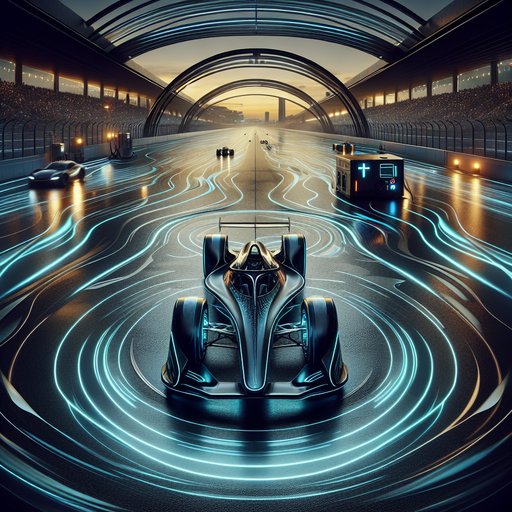
A decade into its life, Formula E has matured from a proof-of-concept street series into an influential technology and sporting laboratory whose lessons are now shaping the wider paddock. With the Gen3 Evo package launching for 2024–25, fast-charging pit stops trialed in 2024, and manufacturer-backed title fights culminating in Nick Cassidy and Jaguar TCS Racing’s 2024 crowns, the championship has moved beyond novelty. Its innovations in powertrains, energy management, and event delivery are informing how traditional series—from F1 to IndyCar—approach performance, sustainability, and showmanship, while spotlighting the practical limits and long-term possibilities of an electric future for Grand Prix racing.
Formula E’s relevance today stems from how quickly it forces teams and suppliers to confront the core engineering challenge of modern mobility: extracting lap time from finite electrical energy. Races are won through software, thermal control, and regenerative braking as much as suspension kinematics, making it a live-fire exercise in efficiency that mirrors the road-car transition. By putting manufacturer programs from Porsche, Jaguar, Nissan, and Stellantis brands under relentless public scrutiny, the series compresses development cycles and broadcasts progress directly to the marketplace. The result is a motorsport ecosystem where speed and sustainability are no longer competing narratives but intertwined metrics of success.
Technically, the Gen3 platform—and its 2024–25 Gen3 Evo upgrade—marks a step change in what single-seater EVs can do on tight, low-grip circuits. With up to 600 kW of regenerative capacity split across front and rear axles and deployable all-wheel-drive in qualifying and Attack Mode, the cars showcase how recovery and traction strategies can substitute for brute combustion power. Acceleration benchmarks have dropped sharply, while revised bodywork and updated tires improve drivability, letting drivers lean on the front axle under regen without rear hydraulic brakes. This is not just spectacle; it proves how energy-flows and control software are becoming as decisive as aero in modern racing.
Fast charging, trialed in 2024 with 600 kW “Attack Charge” pit stops, adds a crucial operational layer that traditional championships are watching closely. The choreography of charging windows, battery temperature windows, and race-neutralization protocols has introduced a new strategic axis comparable to refueling without the emissions and fire load concerns. The technology stress-tests battery robustness under rapid C-rate spikes and validates connector, safety, and marshaling procedures that are directly relevant to mass-market ultra-fast charging. Even where other series won’t copy the format, the procedures and safety cases are already filtering into sanctioning body playbooks.
The supplier stack around Formula E is another quiet force multiplier for the sport at large. High-voltage architectures, silicon-carbide inverters, robust cell-to-pack integration, and brake-by-wire coordination are being iterated at race cadence, with lessons ported into OEM road programs and, indirectly, into hybrid systems elsewhere in motorsport. Battery partners and control-software specialists honed in FE have cross-pollinated into endurance and single-seater projects, while the FIA’s Gen4 tender—set to bring new hardware and a change of tire supplier later in the decade—signals continued investment. This industrial continuity matters: it de-risks innovation for series that cannot afford false starts under tight cost caps.
On the sporting and environmental fronts, Formula E’s city-center model has reframed what a top-tier event can look like. Lower noise and zero tailpipe emissions allow races in dense urban cores that would be off-limits to combustion machinery, pairing fan access with a smaller local air-quality footprint. The series has leaned into lifecycle accounting, from reduced freight to tires with higher sustainable material content, setting a benchmark that other promoters increasingly emulate. You can see the echo in paddock logistics targets across major championships and in how broadcasters now foreground energy-use storytelling alongside lap times.
The influence on traditional open-wheelers is already measurable without insisting on a like-for-like copy. F1’s 2026 power units will roughly triple electrical output to 350 kW while switching to 100% sustainable fuels, a direction of travel validated by FE’s proof that energy management can enhance—not diminish—racing. IndyCar’s hybrid unit, introduced mid-2024, taps into many of the same control philosophies around deployment, regen blending, and safety interlocks that FE has normalized. Meanwhile, Formula E holds the FIA’s exclusive license for an electric single-seater world championship through 2039, effectively steering F1 toward a high-electrification-plus-e-fuels path rather than a near-term fully electric switch.
That guardrail clarifies roles: FE as the all-electric crucible, F1 as the high-speed hybrid flagship. Could Grand Prix racing go fully electric one day? Physics and policy will decide. Current battery energy density and recharging constraints make 300 km Grand Prix distances at F1 speeds impractical without heavier cars or mid-race recharges that would redefine the format, and F1’s stakeholders have publicly committed to sustainable fuels and bigger ERS instead.
Still, Formula E’s rapid gains—from all-wheel-drive deployment rules to verified fast-charge pit operations—are systematically chipping away at those barriers. If breakthroughs arrive, they will do so through the supply chains, safety cases, and control software that FE is maturing in plain sight. In that sense, Formula E isn’t competing with traditional championships so much as future-proofing them. It supplies the test data, industrial partnerships, and fan literacy around electrified racing that F1, IndyCar, and Super Formula increasingly rely on as they tighten sustainability targets.
The headline may be Jaguar versus Porsche in London, or the first successful attack-charge stop at Misano, but the deeper story is a sport learning to win with watts as well as wings. Whatever shape F1’s next era takes, Formula E has already mapped much of the terrain.











